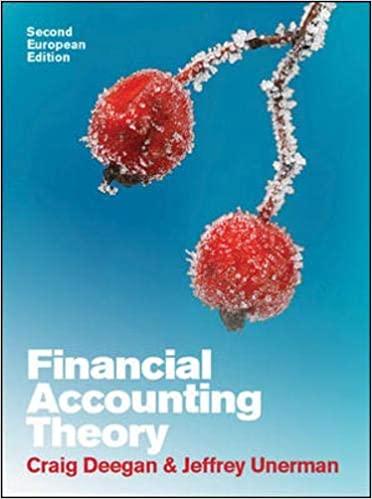You work in the SC department of a firm that makes microchips, You are trying to convince your manager that small changes in the way your company handles its logistic and supply chain practices and improve the firm's financial performance. You've decided to postulate five different cases of changes and need to calculate their expected effect on ROA for the firm. The way your firm currently does business is identified in the Base Case below. Each case describes how the firm might change its practices. The Base Case: - Price of microchips: $9.50 - Quantity of Microchips the firm sells at $10 under current logistics practices: 1,200 - Cost of Goods (to produce a microchip): $7.50 - Variable Costs - Transportation: 5% of sales revenue Handling: 2% of sales revenue Storage: 2% of sales revenue - Promotions: 3% of sales revenue - Fixed Expenses: $840.00 - Inventory Costs: 25% of Sales revenue - Accounts Receivable: 20% of Sales revenue - Other Current Assets: $1,000 - Fixed Assets: $6,500 Case 1: Starting from the Base Case, you recommend the firm partner with a smaller number of transportation providers who will provide the same level of service for less money, reducing the cost of transportation from 5% to 4%. Case 2: Starting from the Base Case, you recommend the firm segment its customers and set different payment expectations with Class II-Class V customers, allowing the firm to reduce accounts receivable from 20% of sales to 15% of sales. Case3: Starting from the Base Case, you recommend better logistics operations practices, allowing you to keep less work-in-progress and raw material inventory, reducing Cost of Goods from $7.50 to $7.25 per unit with no change in service to your customers. Case 4: Starting from the Base Case, you recommend closer relationships with your Class I and Class II customers so you have a better sense of customer demand, allowing you to set higher fill rates for them, increasing quantity sold from 1,200 to 1,400. Case 5: Starting from the Base Case, you recommend making changes to all of the areas listed in Cases 14, but suggest putting less effort into each, resulting in smaller outcome changes, plus closer relationships with your customers allowing you to keep lower amounts of inventory. Those expected changes are: - Quantity Sold: increase from 1,200 to 1,300 - Cost of Goods: decrease from \$7.50 to \$7.40 - Transportation: decrease from 5% to 4.75% - Inventory: decrease from 25% to 22% of sales revenue - Accounts Receivable: decrease from 20% to 18% of sales. The Base Case Case 1: Increase Transportation Efficiency Change in ROA % Case 2: Increase Account Receivable Collection Efficiency | Change in ROA % Case 3: Reduce Cost of Goods Sold / Change in ROA % Case 4: Increase Quantity Sold / Change in ROA % Case 5: Improve Multiple Areas of the Firm / Change in ROA % You work in the SC department of a firm that makes microchips, You are trying to convince your manager that small changes in the way your company handles its logistic and supply chain practices and improve the firm's financial performance. You've decided to postulate five different cases of changes and need to calculate their expected effect on ROA for the firm. The way your firm currently does business is identified in the Base Case below. Each case describes how the firm might change its practices. The Base Case: - Price of microchips: $9.50 - Quantity of Microchips the firm sells at $10 under current logistics practices: 1,200 - Cost of Goods (to produce a microchip): $7.50 - Variable Costs - Transportation: 5% of sales revenue Handling: 2% of sales revenue Storage: 2% of sales revenue - Promotions: 3% of sales revenue - Fixed Expenses: $840.00 - Inventory Costs: 25% of Sales revenue - Accounts Receivable: 20% of Sales revenue - Other Current Assets: $1,000 - Fixed Assets: $6,500 Case 1: Starting from the Base Case, you recommend the firm partner with a smaller number of transportation providers who will provide the same level of service for less money, reducing the cost of transportation from 5% to 4%. Case 2: Starting from the Base Case, you recommend the firm segment its customers and set different payment expectations with Class II-Class V customers, allowing the firm to reduce accounts receivable from 20% of sales to 15% of sales. Case3: Starting from the Base Case, you recommend better logistics operations practices, allowing you to keep less work-in-progress and raw material inventory, reducing Cost of Goods from $7.50 to $7.25 per unit with no change in service to your customers. Case 4: Starting from the Base Case, you recommend closer relationships with your Class I and Class II customers so you have a better sense of customer demand, allowing you to set higher fill rates for them, increasing quantity sold from 1,200 to 1,400. Case 5: Starting from the Base Case, you recommend making changes to all of the areas listed in Cases 14, but suggest putting less effort into each, resulting in smaller outcome changes, plus closer relationships with your customers allowing you to keep lower amounts of inventory. Those expected changes are: - Quantity Sold: increase from 1,200 to 1,300 - Cost of Goods: decrease from \$7.50 to \$7.40 - Transportation: decrease from 5% to 4.75% - Inventory: decrease from 25% to 22% of sales revenue - Accounts Receivable: decrease from 20% to 18% of sales. The Base Case Case 1: Increase Transportation Efficiency Change in ROA % Case 2: Increase Account Receivable Collection Efficiency | Change in ROA % Case 3: Reduce Cost of Goods Sold / Change in ROA % Case 4: Increase Quantity Sold / Change in ROA % Case 5: Improve Multiple Areas of the Firm / Change in ROA %














